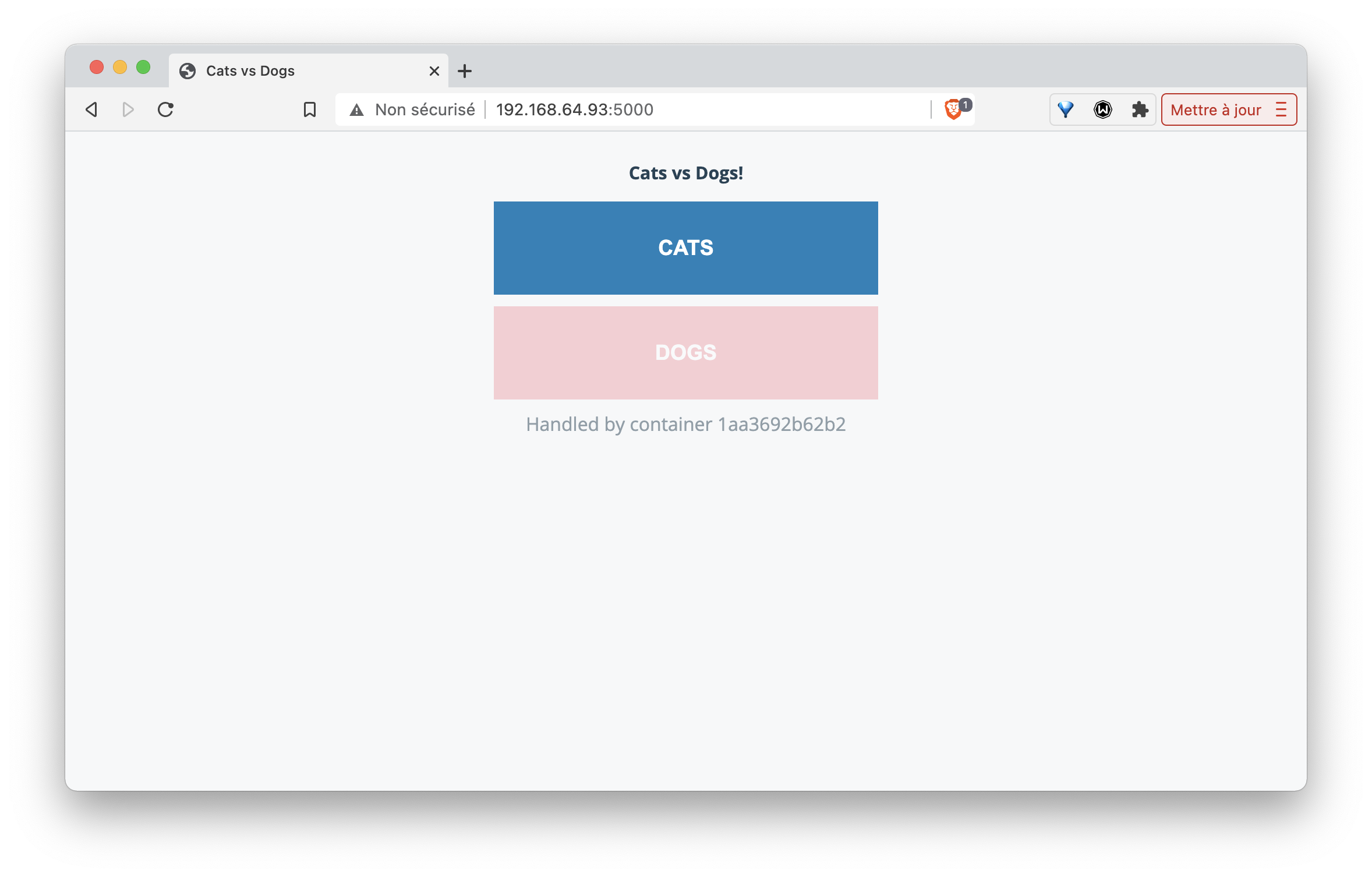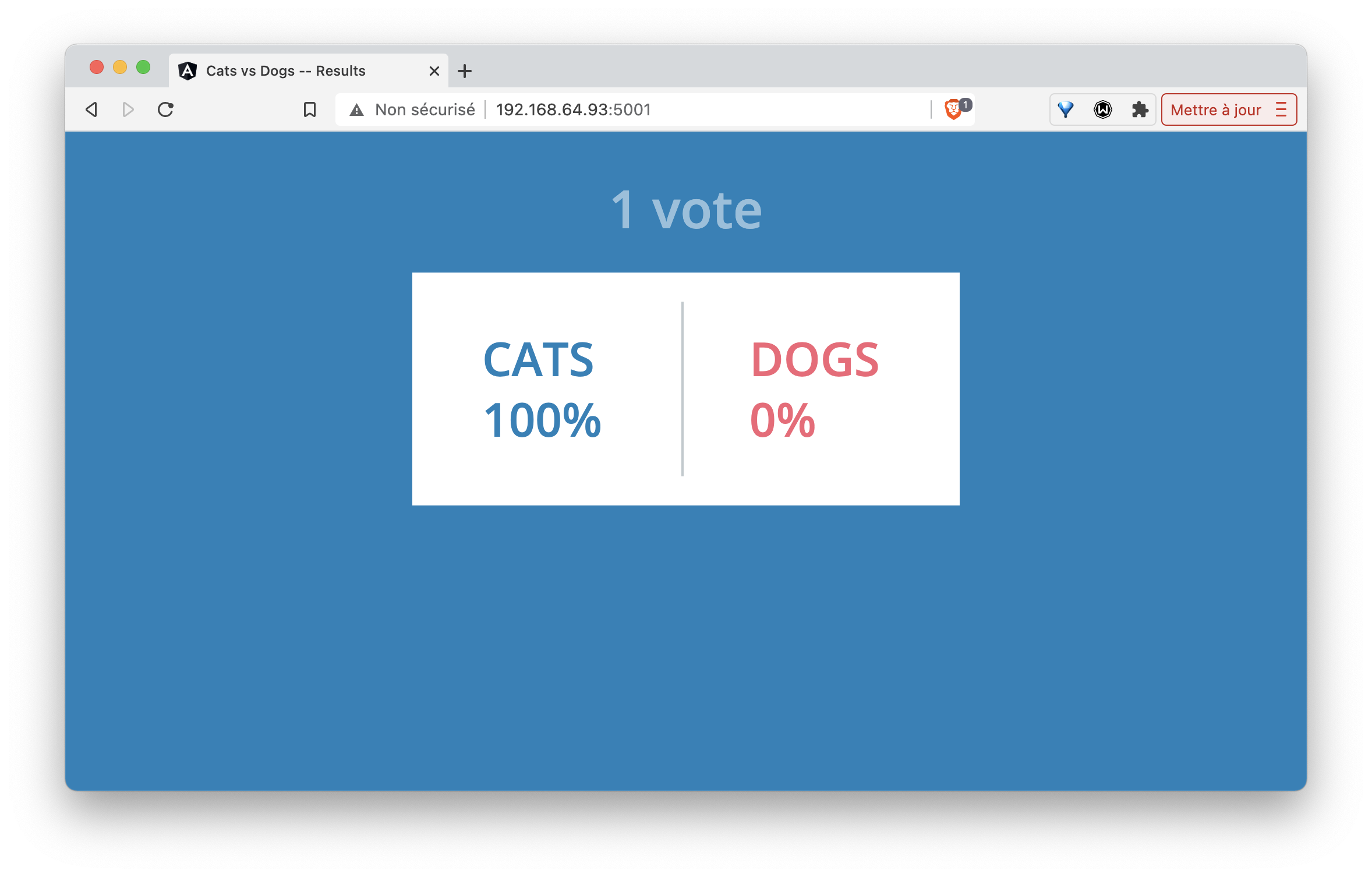Exercise
In this exercise, we will illustrate the use of Docker Compose and launch the Voting App. This application is widely used for presentations and demos, it’s a good example of a simple micro-services application.
Overview
The Voting App consists of several micro-services, those used for version 2 are the following:

- vote-ui: front-end allowing a user to vote between 2 options
- vote: back-end receiving votes
- result-ui: front-end for viewing results
- result: back-end making results available
- redis: redis database where votes are stored
- worker: service that retrieves votes from redis and consolidates results in a postgres database
- db: postgres database where results are stored
Retrieving GitLab repos
Run the following commands to retrieve the repo of each microservice as well as the configuration repo:
mkdir VotingApp && cd VotingApp
for project in devops vote vote-ui result result-ui worker; do
git clone https://gitlab.com/voting-application/$project
doneThe compose.yaml file format
Several files, in Docker Compose format, are available in devops/compose:
- compose.dev.yaml is used to launch the application in a development context
- compose.yaml is used to build images for each microservice in a production context
Launching the application
From the devops/compose directory, launch the application using the following command (the compose.yaml file will be used by default):
docker compose up -dThe steps performed when launching the application are:
- creation of front-tier and back-tier networks
- creation of db-data volume
- building images for vote-ui, vote, result-ui, result, worker services and pulling redis and postgres images
- launching containers for each service
Launched containers
With the following command, list the containers that were launched and ensure they are all in Up status:
docker compose psCreated volumes
List volumes with the CLI, and verify that the volume defined in the docker-compose.yml file is present.
docker volume lsThe volume name is prefixed by the directory name where the application was launched.
DRIVER VOLUME NAME
local compose_db-data
...By default, this volume corresponds to a directory created on the host machine.
Created networks
List networks with the CLI. The two networks defined in the docker-compose.yml file are present.
docker network lsAs with the volume, their names are prefixed by the directory name.
NETWORK ID NAME DRIVER SCOPE
71d0f64882d5 bridge bridge local
409bc6998857 compose_back-tier bridge local
b3858656638b compose_front-tier bridge local
2f00536eb085 host host local
54dee0283ab4 none null localNote: as we are in a single-host context, the driver used for creating these networks is of bridge type. It allows communication between containers running on the same machine.
Using the application
We can now access the application:
we make a choice between the 2 options from the voting interface at http://HOST_IP:5000

we view the result from the results interface at http://HOST_IP:5001

Note: replace HOST_IP with localhost or with the IP address of the machine where the application was launched
Scaling the worker service
By default, one container is launched for each service. It’s possible, with the –scale option, to change this behavior and scale a service once it’s launched.
With the following command, increase the number of workers to 2.
docker compose up -d --scale worker=2Verify that there are now 2 containers for the worker service:
docker compose psNotes: it’s not possible to scale the vote-ui and result-ui services because they both specify a port, multiple containers cannot use the same host machine port
Removing the application
With the following command, stop the application. This command removes all previously created elements except volumes (to avoid losing data)
docker compose downTo also remove the volumes used, add the -v flag:
docker compose down -v